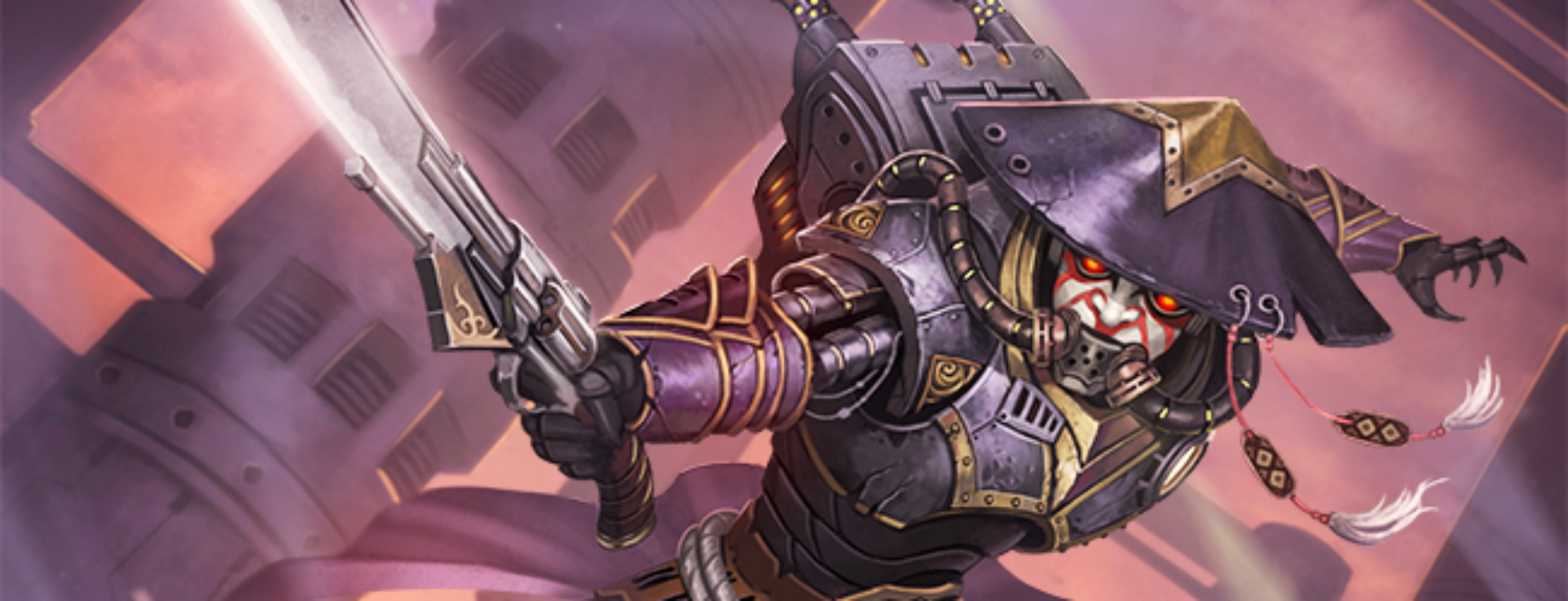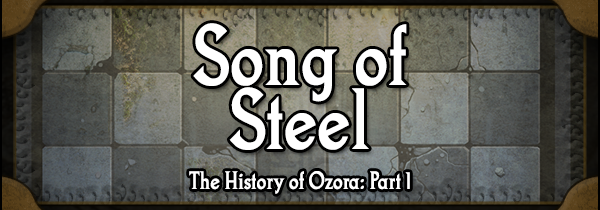Do not think paradise without purgatory, or purgatory without paradise.
It is the slave who doubts.
It is resistance that turns the world.
—from The Book of the Heretic
The Magnan Kingdom’s legacy of peace was interrupted in 416 when Saigo, Royal Governor of the Wase-ru Colonies, defied his king, proclaiming himself sole-ruler of the western lands he administered. For nearly four centuries, the Colonies existed within the Kingdom of Magna as peaceful allies and supporters of the Crown. In fact, it was the Colonies’ technological skill that solidified Father Magnus’s rule in the east, helping to push the Titans back into the Riesewald. The longstanding allegiance, however, was broken when Saigo uttered what would later be called the Bloody Declaration. Among other things, Saigo declared himself Emperor, and that his new Wase-ru Empire was to be divine custodian of “all lands touched by the light of the sun.” This was taken as a declaration of war by then King Faelix II, and the drums of war began to beat.
The Royal Navy of the Magnan Kingdom was well-prepared for war, having mastered the skies with the development of mighty airships. Their aerial superiority was uncontested, and with the help of Grand Admiral Qalea, they began establishing the Empyrean Estates: great swathes of airspace that extended past the horizons—and well beyond the ancient territorial boundaries that divided the provinces. It was an untouched resource that they alone could control, and so they began their expansion. The Royal Fleet of the 37th Estate, headed by the flagship Makhum, began developing the airspace above the Wase-ru Empire while the Royal Army began its western offensive on land, led by Grand General Muharrik. The two-pronged attack from the air and the land seemed an easy victory for the Magnan forces. What neither Qalea nor Muharrik anticipated, however, was that the Wase-ru Gunryo had no intention of fighting the Magnan Kingdom on its terms.
Saigo and his advisors had anticipated the two-pronged attack. Their focus was simple: to defend the Empire. They knew full-well that an invasion by land or sky would be fruitless if the Empire made the first move. Instead, the Wase-ru Gunryo laid a trap and waited. What had brought great acclaim to the Empire, and indeed what helped to maintain and enforce peace in the kingdom, was the technological prowess the Wase-ru possessed. They were the greatest mathematical minds of their age, and with that acumen, they created the budoka: fully autonomous mechanical foot-soldiers designed for war. Though these budoka relied on very basic, very specific instructions from their masters, they could make essential decisions and understand the landscape of battle. Once directed, a single budoka was more than a match for a single human soldier, and would strike unerringly toward whatever goal its masters had directed. At first, the budoka were simply instructed to defend their holdings and give no leeway to the advancing Royal Army. By the time the 37th Estate began its aerial bombardment, very little territory had been lost to the advancing force. It seemed, for a time, that the Magnan Kingdom would easily quash this rebellion from the sky. That is when Saigo sprung his trap.
What the Gunryo had ensured in defending their Empire so resolutely was that the Royal Fleet of the 37th Estate was extended well beyond the front lines, and well beyond any support the Royal Army could provide. Saigo knew his enemy well, and knew, too, that Grand Admiral Qalea would not waste the opportunity to try to seize as many budoka as she could. King Faelix II had long been curious how these machines functioned, and Saigo knew of Qalea’s ambition. In preparation for the war, Saigo had his budoka masters rig their creations with explosives. Now, with three thousand pounds of metal and hellfire aboard the Makhum, Saigo ordered his budoka bombs to be detonated. In an instant, Grand Admira Qalea was killed and the entirety of the 37th Estate’s airship fleet was set ablaze. For days, the fiery rubble plummeted to the earth. Towns were evacuated as the one hundred thousand tonnes of burning metal and flesh rained death on the countryside. The Empire paid a heavy price for their tactics, but in a single act of destruction, the Wase-ru Empire was back on equal footing with the Kingdom of Magna.
Now they had the might of the Royal Army to contend with.
For a time, the Imperial soldiers pressed the attack into the Magnan heartland, in what is today the province of Capulan. The Battle of Steadfast was a decisive victory for the Empire. This was their farthest advance into the Capulan territories yet, and they stood a mere 3 days march overland, through the Stonegrace Mountains. Saigo, though, opted to fortify the port town of Steadfast instead of pressing the advantage.
The First War lasted for years in this way. Each great power making forays into enemy lands and seizing one stronghold after another. By the time of its sixth year, neither side had declared victory, but incalculable lives had been lost. The stalemate seemed to stretch on for ages. All of that changed during the Night of Falling Stars. Seeing a meteor shower as a divine sign recalling the destruction of the Makhum, Saigo sent a single budoka to assassinate King Faelix II. No one today knows how such a machine was allowed entry into the palace so easily, but in the end, the assassination attempt was successful. As Faelix lay dying, he uttered his final command: “Tear them from the earth.” With renewed vigor, and now with the whole of the world as allies, the Royal Army shifted the tide of war in their favor.

